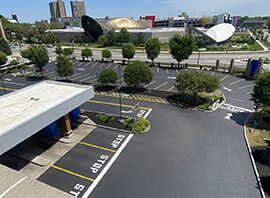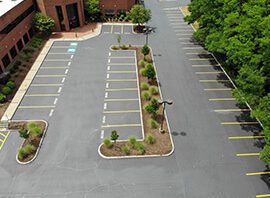From Everett to Renton, property managers across the Greater Seattle region are always looking for ways to maintain property value and reduce operating costs. What many don’t realize is that parking lot striping and painting may be tax-deductible — depending on how the work is classified under IRS guidelines.
💡 1. Routine Striping Is Often Fully Deductible
If you’re restriping your parking lot simply to maintain visibility, repaint ADA stalls, or freshen directional arrows, that work often qualifies as routine maintenance. According to IRC §162(a), ordinary and necessary expenses incurred during business operations can be deducted in the year they’re paid.
Additionally, the IRS’s final tangible property regulations include a Routine Maintenance Safe Harbor under Treasury Regulation §1.263(a)-3(i). This allows expenses for work that keeps a facility in “ordinarily efficient operating condition” to be expensed immediately.
✅ This means restriping is usually a direct write-off — a win for your tax return.
🏗 2. Capital Improvement? You Still Benefit
If the work goes beyond maintenance — like restriping after paving, reconfiguring layout, or expanding capacity — the IRS may consider it a capital improvement. In this case, IRC §263(a) requires you to capitalize the cost and depreciate it over time.
While you can’t deduct the full cost immediately, you still get a tax benefit by depreciating the improvement as part of your property’s basis. Over the long term, this can reduce capital gains and increase deductions.
🚘 3. Public vs. Employee Use Matters
Under the Tax Cuts and Jobs Act, expenses for employee-only parking are generally no longer deductible (IRC §274(a)(4)).
However, if the parking is primarily for customers, tenants, or the general public, you may still deduct the related maintenance or striping costs. The IRS outlines this exception in IRC §274(e)(8).
📌 This is especially relevant in Seattle-area retail centers, apartment complexes, and office buildings with visitor parking.
📂 4. What You Need to Claim It
- Keep detailed invoices describing the nature of the work (maintenance vs. improvement)
- Document who the lot primarily serves (public vs. employee)
- Work with a tax professional to apply the proper classification
🎯 Final Thought for Seattle Property Managers
If you’re already investing in your property’s appearance and safety, don’t leave money on the table. Striping your lot might be more than just a visual upgrade — it could be a direct tax benefit under U.S. tax law.
Looking for a contractor who understands both compliance and curb appeal? 1-800-STRIPER of Bellevue serves King, Snohomish, and Pierce counties with top-tier striping services — helping you look good and stay financially sharp.



